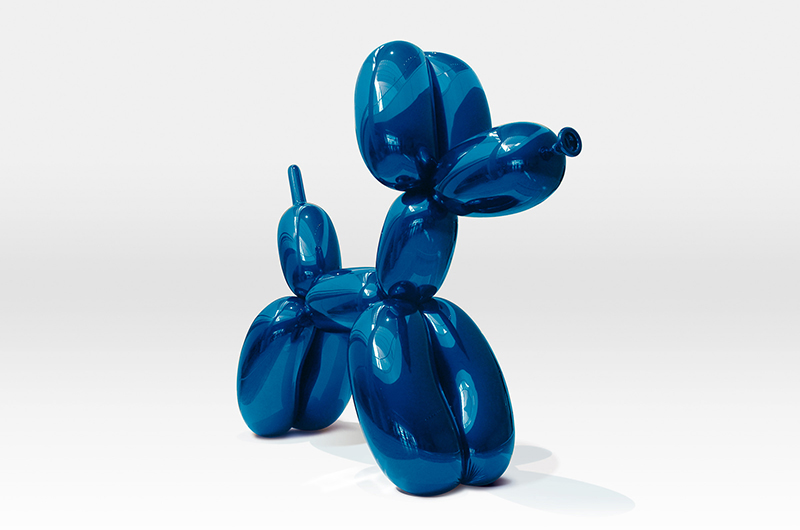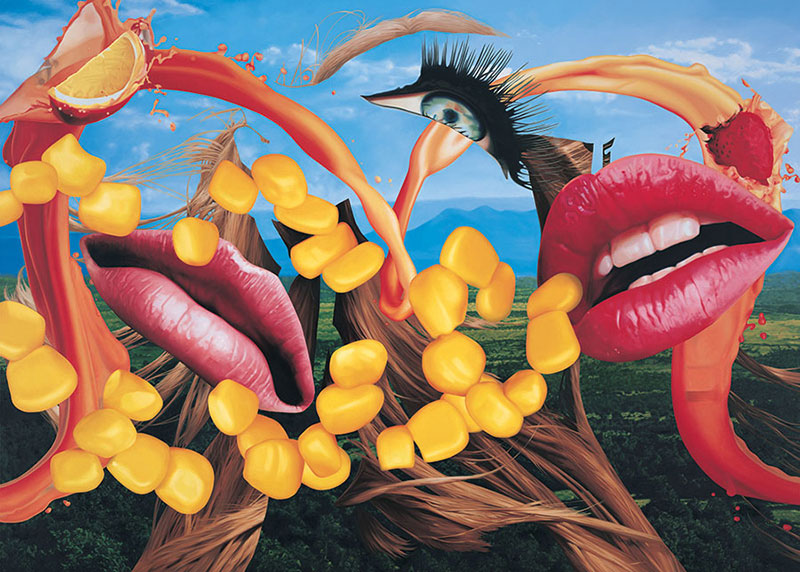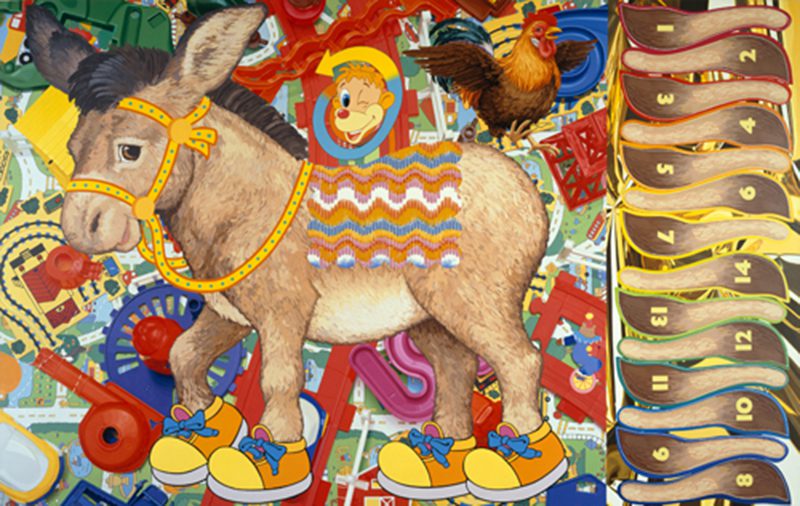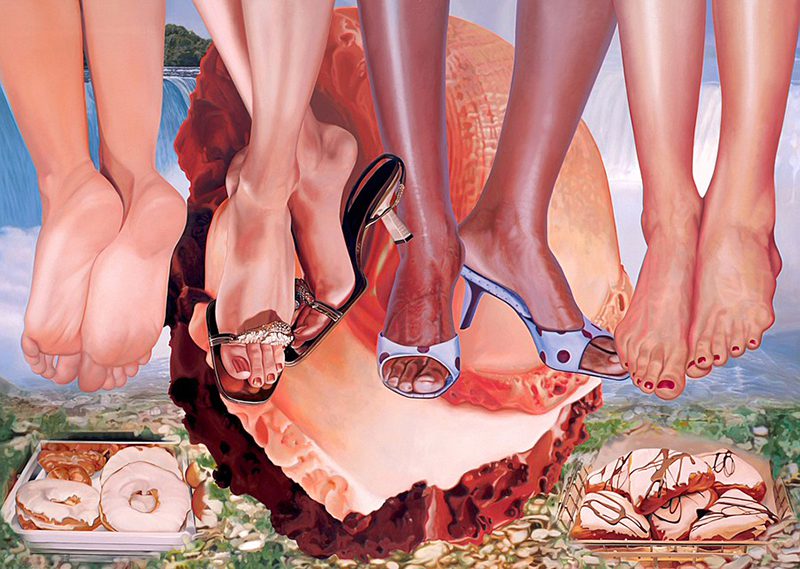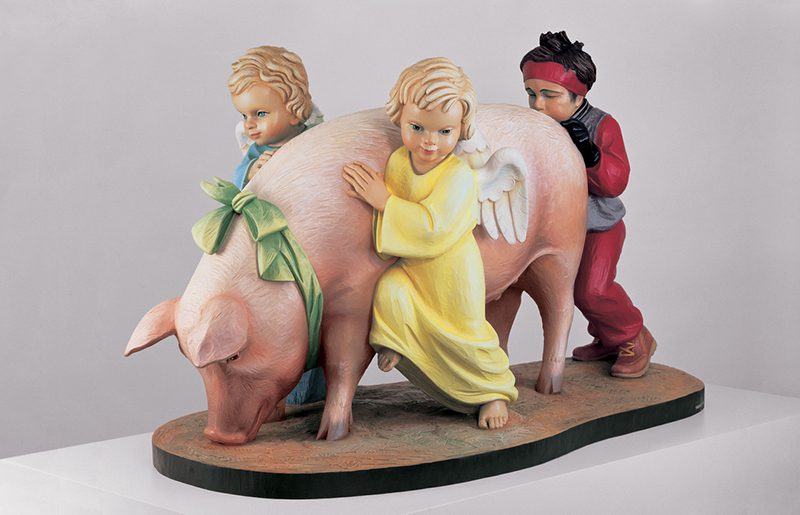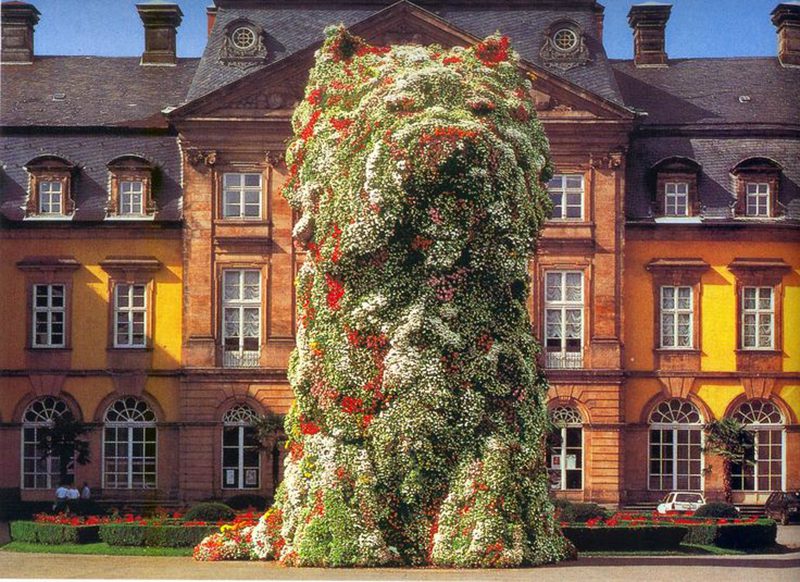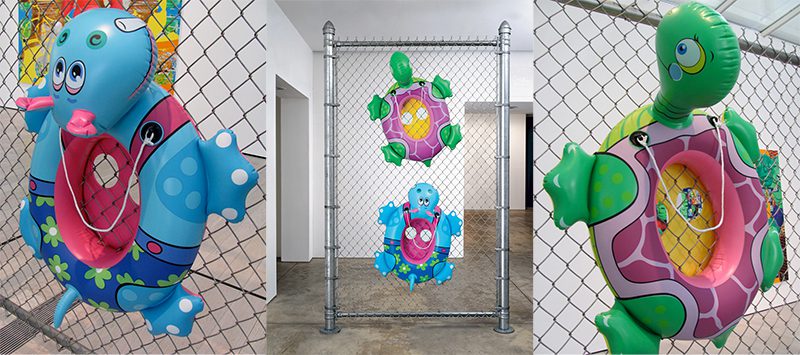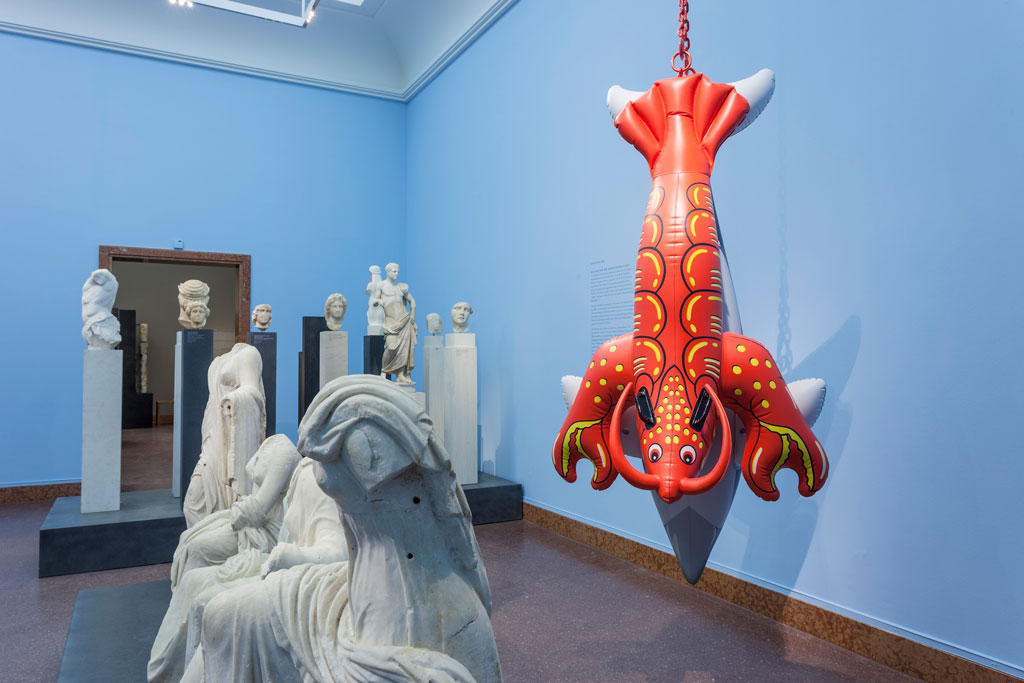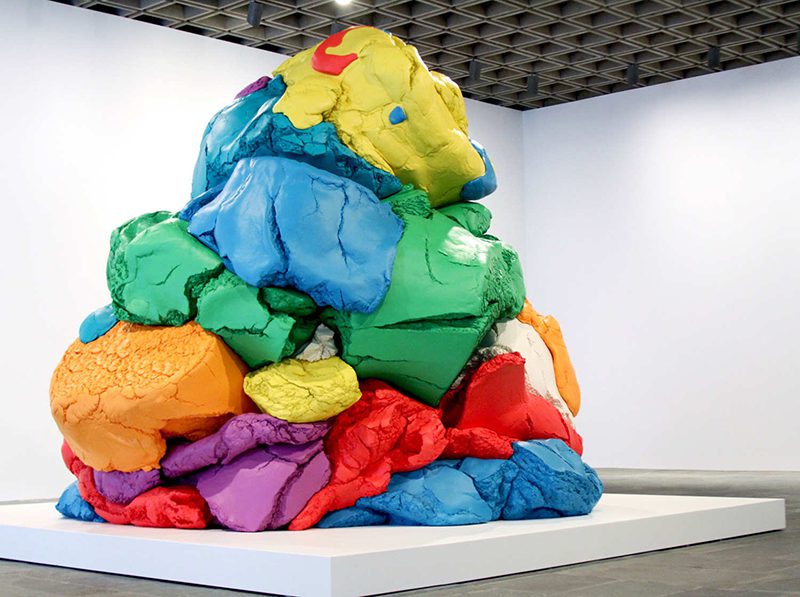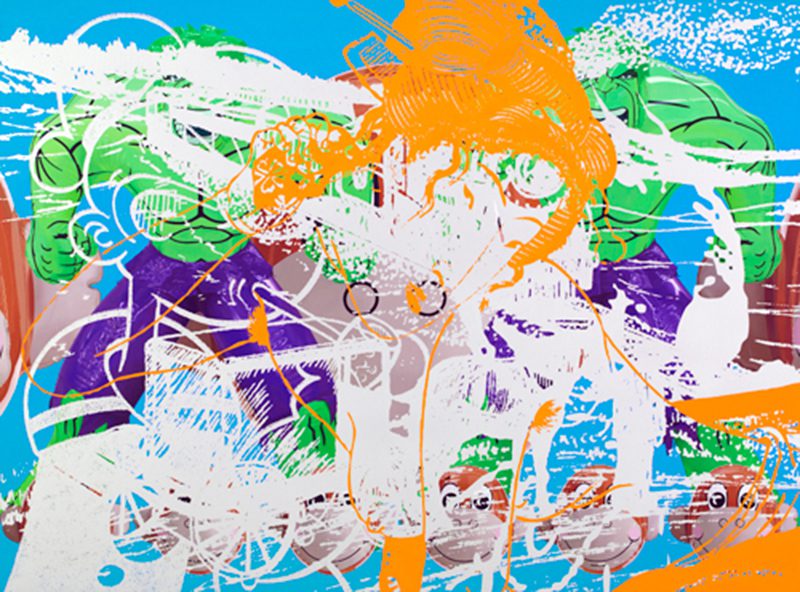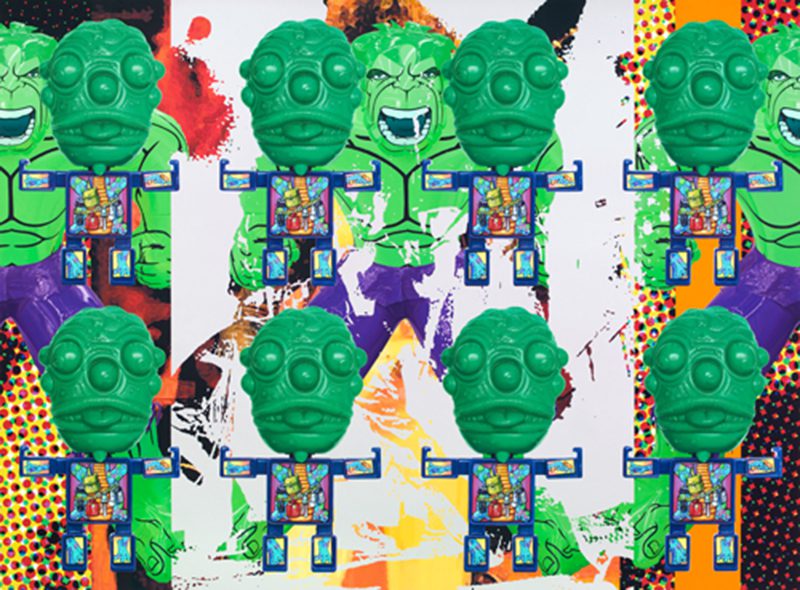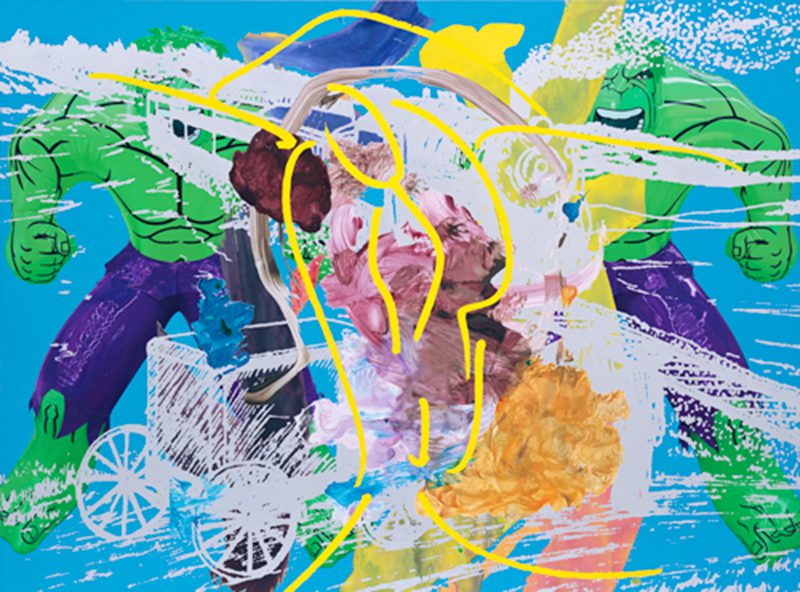TRACES: Jeff Koons
 Today is the occasion to bear in mind Jeff Koons (21/1/1955 – ), one of a number of American artists to emerge in the 1980s with an aesthetic devoted to the decade’s pervasive consumer culture. Koons managed to shock the art world with one audacious work after another, from displaying commercial vacuum cleaners and basketballs as his own art to making porcelain reproductions of kitsch objects to showing homemade pornography. This column is a tribute to artists, living or dead, who have left their mark in Contemporary Art. Through documents or interviews, starting with: moments and memories, we reveal out from the past-unknown sides of big personalities, who left their indelible traces in time and history…
Today is the occasion to bear in mind Jeff Koons (21/1/1955 – ), one of a number of American artists to emerge in the 1980s with an aesthetic devoted to the decade’s pervasive consumer culture. Koons managed to shock the art world with one audacious work after another, from displaying commercial vacuum cleaners and basketballs as his own art to making porcelain reproductions of kitsch objects to showing homemade pornography. This column is a tribute to artists, living or dead, who have left their mark in Contemporary Art. Through documents or interviews, starting with: moments and memories, we reveal out from the past-unknown sides of big personalities, who left their indelible traces in time and history…
By Efi Michalarou
Jeff Koons plays with ideas of taste, pleasure, celebrity, and commerce. “I believe in advertisement and media completely. My art and my personal life are based in it”. His paintings and sculptures borrow widely from art-historical techniques and styles, although often seen as ironic or tongue-in-cheek, Koons insists his practice is earnest and optimistic. “I’ve always loved Surrealism and Dada and Pop, so I just follow my interests and focus on them. When you do that, things become very metaphysical”. Jeff Koons was born in York, Pennsylvania, in 1955. At the age of eight, he painted copies of Old Master paintings, signed them “Jeff Koons” and sold them at his father’s furniture store. In 1972, he attended the Maryland Institute College of Art in Baltimore. After an exchange year at the Art Institute of Chicago, he graduated with a BFA in 1976. In 1977, he moved to New York and began working at the membership desk of the Museum of Modern Art. There he quickly became notorious for his outrageous clothes and hair, as well as his impressive salesmanship. It was during this period that he first began to work with garish inflatable flowers and rabbits, combining them with plastic, Plexiglas, and mirrors to produce striking sculptures. In 1980, Koons left the museum and began selling mutual funds and stocks at First Investors Corporation to finance the work that would eventually appear in his “The New series“ (1980–83): vacuum cleaners and shampoo polishers displayed in clear Plexigas vitrines. Koons’s “Equilibrium” series (1985) included sculptures comprised of basketballs floating in tanks of water. In 1986, he appeared in a group show with Peter Halley, Ashley Bickerton, and Meyer Vaisman at Sonnabend Gallery in New York, the cool style of the works in the show led critics to declare a shift away from the Neo-Expressionism that had dominated the earlier half of the decade. Koons’s “Rabbit” (1986), a forty-one-inch-high stainless-steel version of one of the inflatable rabbits he had experimented with previously, drew much of the critical attention. During that same year, Koons introduced the subject of consumerist decadence in his work, most notably in the series “Luxury & Degradation”, which features images of liquor advertisements and sculptural renderings of travel bars (liquor bottles and glasses in portable cases). He expanded on this theme in the ”Banality” series (1988), producing sculptural pairings such as the pop singer Michael Jackson and his pet chimpanzee. For that sculpture he had said in an Interview with Efi Michalarou “The Michael Jackson appears here as a kind of Messiah, referring to the way in which the world faces today celebrities”. This series also included “ads” starring Koons himself, that played on his newfound art-world celebrity. “My life is directly connected with my work”, said in the same Interview. This use of his own image presaged the “Made in Heaven” series (1990–91), first shown at the 1990 Venice Biennale, in which the artist and his new wife, Ilona Staller, appeared in a panoply of hard-core pornographic poses. In 1992, Koons’s forty-foot-high sculpture “Puppy”, a rendering of a West Highland terrier comprised of soil and living, multicolored flowers, was installed in Kassel during Documenta 9. Though not part of the official show, the sculpture was extremely popular and has since been displayed in other cities. In his work since the mid-1990s—in series such as “Celebration” (1995–98), “Easyfun” (1999–2000), “Easyfun/Ethereal” (2000–02), “Popeye” (2003), and “Hulk Elvis” (2007), Koons has continued to produce sculpture but has also concentrated on complex paintings that oscillate between abstraction and pop-culture references. In the “Antiquity” series referring to the ancient Roman marble statue Callipygian Venus, “Metallic Venus” (2010–2012) was made of high chromium stainless steel with transparent color coating and live flowering plants. At the center of each scene in the “Antiquity” paintings (2009–13) is a famous ancient or classical sculpture, meticulously rendered in oil paint and scaled to the same size as the sculptures. The equally detailed backdrops include an Arcadian vision. The artist had a 2014 retrospective at the Whitney Museum of American Art in New York.

